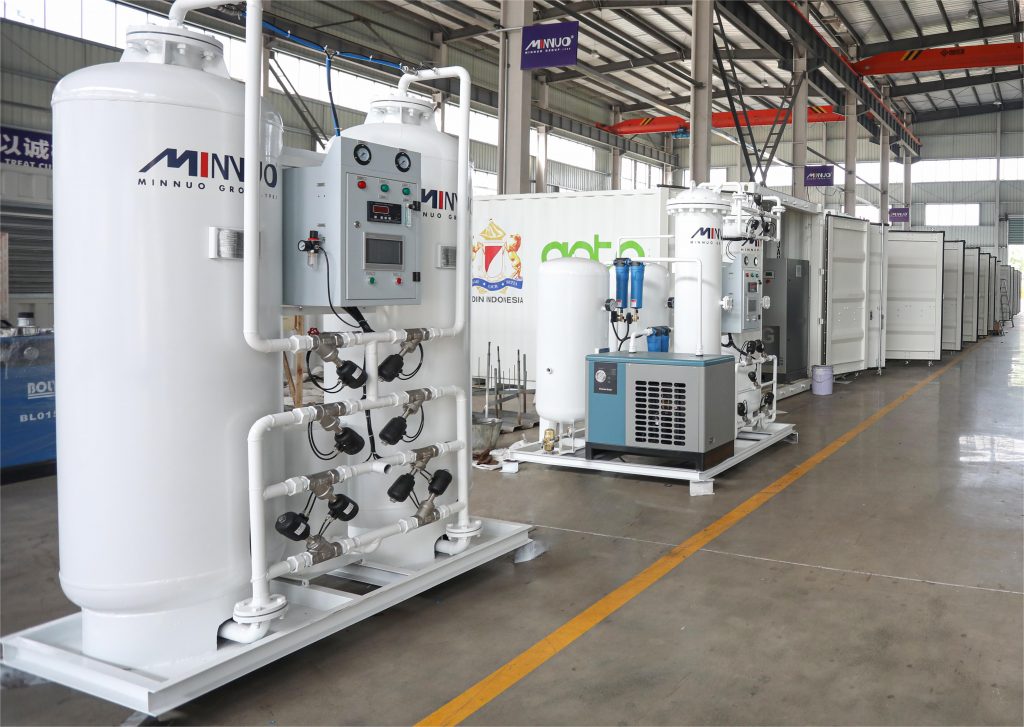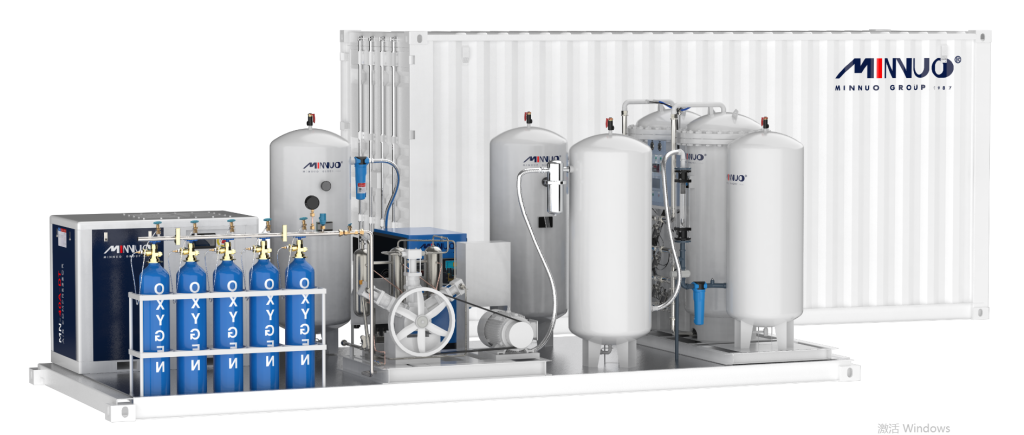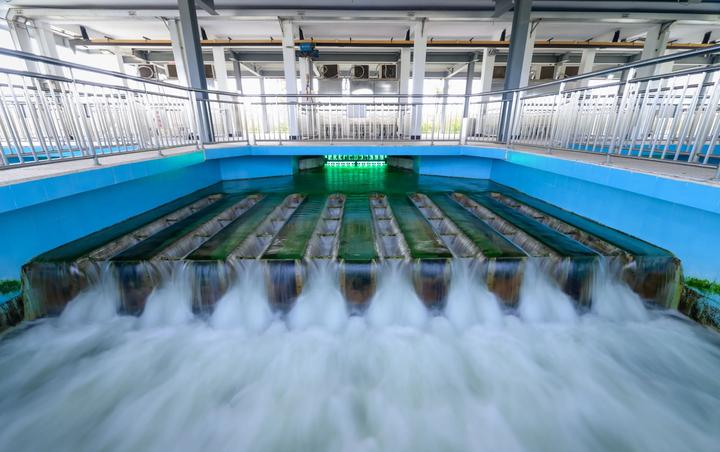Oxygen is the crucial element that sustains life on our planet; it is highly reactive, readily engaging in chemical reactions to produce oxides. These oxidation processes also generate significant heat. There are many different uses of oxygen. In addition to sustaining life, oxygen finds widespread applications as an oxidizer and combustion enhancer in various industrial sectors.
Metallurgy
In the industrial sector, the steel industry stands out as the largest consumer of oxygen. Compared to air, pure oxygen facilitates the faster and more efficient removal of carbon dioxide and other non-metallic impurities.
Injecting high-purity oxygen into steelmaking furnaces enables the oxidation of impurities like phosphorus, sulfur, and silicon in iron. Simultaneously, the heat generated by oxidation is adequate to maintain the temperature required for steelmaking. The introduction of pure oxygen significantly reduces the smelting time, conserves energy, and enhances the quality of steel produced. Oxygen is also extensively used in the smelting of non-ferrous metals such as copper, lead, and zinc.
Apart from steelmaking furnaces, open hearth furnaces, glass and mineral wool melting furnaces, lime and cement kilns increasingly employ enriched oxygen air or introduce oxygen through lances in the smelting process to boost productivity and save energy.
Chemical Industry
Oxygen plays an indispensable role in the chemical industry. It serves as a raw material in the manufacturing of various chemicals used in areas such as pharmaceuticals, dyes, explosives, and more. Oxygen is utilized in the production of nitric acid, hydrogen peroxide, ethylene oxide, vinyl chloride, acetylene, methanol, and many more chemicals.
In the production of ammonia, oxygen is commonly employed to oxidize feed gases, enhancing the process and increasing output. For instance, during coal gasification, a sufficient supply of oxygen is necessary to generate synthesis gas, which serves as a chemical feedstock or a more easily transportable and usable fuel.
High-temperature cracking of heavy oil also requires oxygen as an oxidizing agent. Oxygen facilitates the complete combustion of hydrocarbons in cracking products, improving the efficiency of heavy oil cracking and removing pollutants from the products to enhance their purity.
In the process of producing methanol from natural gas via reforming reactions, oxygen plays a crucial role as an oxidizing and promoting agent. It helps increase methanol production and maintains the activity of catalysts for the reaction to continue.
The production of ethylene and propylene oxide products also demands significant amounts of oxygen.
Environmental Protection
The increasing use of oxygen in treating sewage, industrial wastewater, and incinerating waste has elevated its importance in the field of environmental protection. Compared to other chemical processes, oxygen is more effective in treating wastewater. Oxygen can oxidize organic compounds in wastewater into inorganic substances. It can enhance bacterial growth, accelerating the metabolism of waste through natural biological degradation processes. Introducing oxygen into sewers can inhibit the formation of hydrogen sulfide, preventing severe pipe corrosion and unpleasant odors. Ozone can also be utilized in drinking water treatment.
In industrial waste gas treatment processes, oxygen is often employed as an oxidant or redox agent to reduce the content of organic materials in emissions, thereby lowering pollution levels.
Within enclosed systems, such as incinerators used to dispose of hazardous waste, pure oxygen can result in more thorough combustion for waste destruction.
Metal Processing
Oxygen’s role as a combustion enhancer has solidified its place in the field of metal processing. Many materials that typically do not burn in air can combust in an oxygen-rich environment. Therefore, when mixed with fuel gas, oxygen can provide higher temperatures for combustion compared to burning in air. This characteristic has found extensive applications in metal cutting, welding, glassblowing, and other processes, significantly increasing efficiency.
In oxy-acetylene welding or cutting, acetylene and oxygen serve as fuel and oxidizer, respectively. Acetylene combustion generates a high-temperature flame reaching up to 3000 degrees Celsius, causing metal to melt. At this point, the high-speed stream of oxygen is used to blow away the molten metal, achieving the purpose of welding or cutting.
Healthcare
In the medical field, a reliable supply of oxygen has saved countless lives. Oxygen can aid in providing respiration to save lives or assist in treatment, improving patient comfort. For individuals with respiratory conditions such as emphysema, supplemental oxygen is crucial. Oxygen is also used in the treatment of diseases like pneumonia, asthma, and congestive heart failure. Oxygen-enriched anesthetics ensure life support during general anesthesia. Oxygen plays a significant role in rescuing asphyxiated and critically ill patients.
Compressed oxygen reserves are utilized in various hypoxic or low-oxygen, even anoxic environments, such as deep-sea locations, high-altitude regions, high-altitude flights, or outer space. Oxygen facilities are widely used for healthcare by populations exposed long-term to low-oxygen environments like mountain climbers and border patrol soldiers.

Military and Space Exploration
In liquid-fueled rockets or missiles, liquid oxygen is often utilized as an oxidizer for fuels like liquid hydrogen and liquid methane, enabling the powerful thrust required for liftoff.
Liquid oxygen explosives are created by saturating combustible materials with liquid oxygen, giving them highly explosive properties.
Pure oxygen is also employed to supply submarines and astronauts.
Aquaculture
Enhancing the aquaculture environment by oxygenating the water can facilitate the cultivation of a greater number of fish in a given water area. Sufficient oxygen levels enable fish to stay healthy and grow larger, providing them with a competitive edge when it comes time for sale.
Other Applications
- Gold Mining
In fact, oxygen is often utilized as an oxidizing agent in gold mining. Oxygen can react with metal compounds in gold ore, transforming them into metals that are easier to extract or compounds that are simpler to process.
- Glass Blowing
Oxygen-fueled flames create high temperatures to heat and melt glass for shaping and blowing. By regulating the flow and pressure of oxygen, glass artisans can control the expansion and shape of the glass, enabling precise manipulation during the glass blowing process to craft a variety of glassware.
- Paper Pulp Bleaching
Using oxygen as an oxidizing agent in manufacturing bleached paper pulp is more environmentally friendly. Compared to traditional bleaching methods involving chlorine compounds, oxygen bleaching can reduce water pollution.
- Deep Well Operations
Oxidation treatments may be necessary in deep well operations to aid in handling and altering the properties of underlying soil or rock.
- Electronics Industry
Oxygen is crucial for manufacturing semiconductor integrated circuits, as it can alter material properties, form dielectric layers, and clean chip surfaces. In the production process of optical fibers, oxygen serves as a vital gas ingredient.
- Magnetohydrodynamic Power Generation
Magnetohydrodynamic power generation is a technology that harnesses the electrical energy produced by fluids under the influence of a magnetic field. In magnetohydrodynamic power generation systems, oxygen plays essential roles in insulation, protection, controlling atmosphere, and heat conduction.
Oxygen Gas Uses by Purity
Different applications require varying levels of oxygen purity. Here are some examples of oxygen purity requirements in common fields:
- Medical: Oxygen purity requirements for oxygen therapy typically exceed 99.5%. Oxygen used as a carrier for anesthetics requires purity levels of 99.99% or higher.
- Industrial: Oxygen supply for industrial purposes generally falls between 90% to 98% purity levels.
- Electronics Manufacturing: Oxygen used for high-temperature heat treatment of semiconductor materials may require purity levels of 99.99% or higher.
- Laboratory: Some laboratories may demand oxygen purity levels exceeding 99.999%.
- Everyday Applications: Applications like oxygen therapy and oxygen-based beauty treatments may necessitate oxygen purity levels exceeding 99%.
- Welding and Cutting: Industrial-grade oxygen for welding and cutting typically requires purity levels around 99%.

How to Obtain Oxygen Gas
Industrial oxygen production methods primarily include cryogenic distillation, pressure swing adsorption technology, membrane separation, and electrolytic oxygen production. Cryogenic distillation is a traditional and well-established method of oxygen production. It involves cooling air to liquefaction and then separating oxygen by taking advantage of the different boiling points of air components. This is the primary method for large-scale industrial oxygen production.
Pressure swing adsorption technology and membrane separation have become increasingly popular in medium to small-scale oxygen-rich applications in recent years. They require lower investments compared to cryogenic distillation and offer more flexibility and convenience.
Water electrolysis for oxygen production can generate two cubic meters of hydrogen gas while producing one cubic meter of oxygen, but its energy consumption is too high, making it unsuitable for large-scale oxygen production.
At Minnuogas, we offer a variety of oxygen production systems and solutions ranging from small to large-scale oxygen production units. Whatever oxygen business venture you are looking to start, feel free to reach out to us, and we will be dedicated to addressing all your inquiries.






 sales2:+86 17506119168
sales2:+86 17506119168

